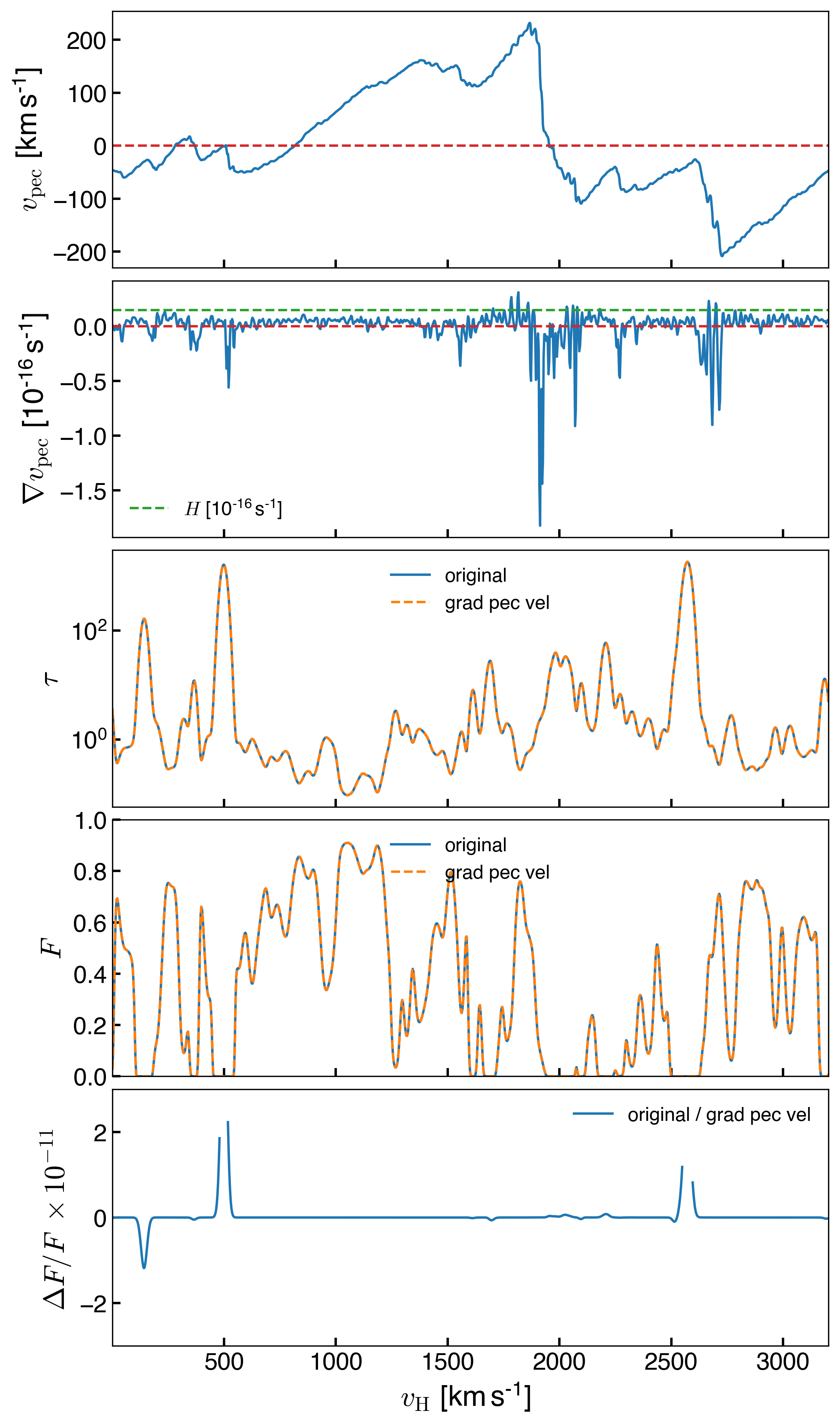Flux calculation: Velocity gradient REVISED
The equation using Hubble velocity along the line of sight to do the integral:
\(\tau_{u_{0}}=\frac{\pi e^{2} \lambda_{0}}{m_{e} c } f_{12} \int \frac{n_{\mathrm{HI}}}{\sqrt{\pi} b} \exp \left[-\left(\frac{u-u_{0}}{b}\right)^{2}\right] \frac{1}{H} \, dv\), where \(dv = H dr\) is the differential in Hubble velocity along the LOS
For the second form of the equation, using the gas velocity \(Hr + u_\mathrm{pec}\) to do the integral, then
\[dr = \left| \frac{du}{dr} \right| ^{-1} du = \left| \frac{1}{ H + \nabla u_\mathrm{pec}} \right| du\]Where
\[du = \left| H dr + \Delta u_\mathrm{pec} \right|\]is the differential of the gas velocity along the LOS. Note that an absolute value around \(du\) is needed to avoid negative values.
\[\tau_{u_{0}}=\frac{\pi e^{2} \lambda_{0}}{m_{e} c } f_{12} \int \frac{n_{\mathrm{HI}}}{\sqrt{\pi} b} \exp \left[-\left(\frac{u-u_{0}}{b}\right)^{2}\right] \left|\frac{1}{ H + \nabla u_\mathrm{pec}} \right| d u\]Numerically the gradient and the difference are evaluated:
\[\nabla u_\mathrm{pec} = \frac{u_\mathrm{pec}^{i+1} - u_\mathrm{pec}^{i-1} }{2 dr}\] \[\Delta u_\mathrm{pec} = \frac{u_\mathrm{pec}^{i+1} - u_\mathrm{pec}^{i-1} }{2 }\]The comparison of the Flux from the two calculations is below.

The fractional differences in the Flux are \(\lesssim 10^{-11}\)!!!
Actually, the term
\[\frac{H dr + \Delta u_\mathrm{pec}}{ H + \nabla u_\mathrm{pec}} = \frac{H dr + \Delta u_\mathrm{pec}}{ H + \frac{\Delta u_\mathrm{pec}}{dr}} = dr \frac{H + \frac{\Delta u_\mathrm{pec}}{r}}{ H + \frac{\Delta u_\mathrm{pec}} {dr}} = dr\]Which of course should hold from the Jacobian of the transformation. Then this becomes the original form of the equation just changing \(dr = H^{-1} dv\)
The issue that I had before was that I was missing the term \(\Delta u_\mathrm{pec}\) in \(du\).